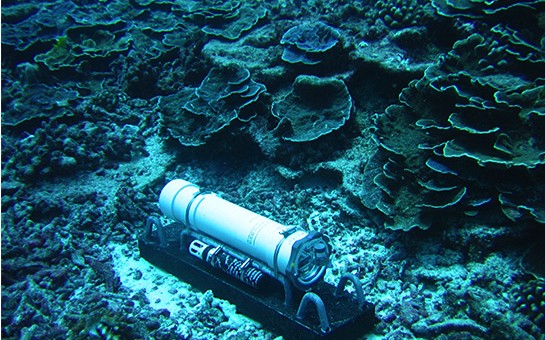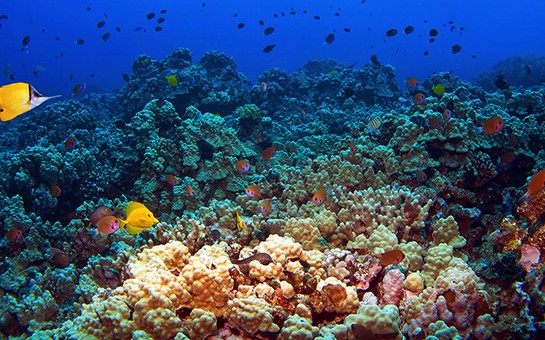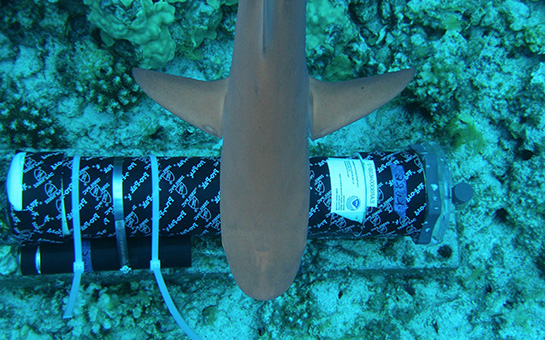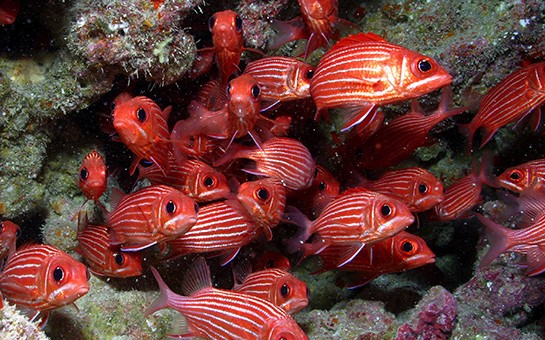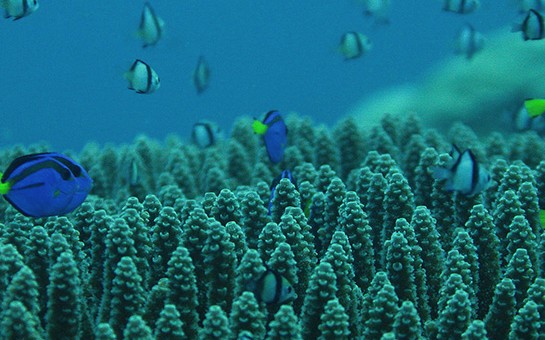Coral reef acoustic monitoring
Coral reefs and their associated habitats are among the most biologically diverse and complex ecosystems in the world. Sadly, coral reefs are rapidly being degraded in many parts of the world by a variety of human impacts, including pollution, overfishing, coastal development, physical disturbance and global climate change. A significant challenge faced by management agencies, such as the National Oceanic and Atmospheric Administration (NOAA), is the need for assessment and long-term monitoring of the health and condition of coral reef ecosystems under U.S. management jurisdiction. The widespread distribution and remoteness of many islands and atolls present significant logistical challenges that result in only intermittent and limited opportunities for monitoring at most locations.
To help overcome some of the limitations of traditional monitoring approaches, a passive acoustic coral reef monitoring program was initiated in 2006 by NOAA’s Pacific Islands Fisheries Science Center in partnership with the Hawaii Institute of Marine Biology and OSI. Many species of crustaceans and fish on coral reefs produce distinctive sounds and are also sensitive to environmental factors such temperature, light, salinity, noise, etc. Passive acoustic monitoring therefore has the potential to provide a wealth of information on the occurrence and behavior of coral reef species and the overall health and stability over time of coral reef communities. Between 2006 and 2012, long-term acoustic data were obtained using Ecological Acoustic Recorders (EARs) deployed by divers at over 50 locations on reefs throughout the tropical Pacific. OSI is currently partnered with researchers from the Woods Hole Oceanographic Institution to continue this line of research and has deployed EARs on coral reef locations throughout Maui. Ongoing analyses of these data address a variety of biological questions related to many taxa, from primary consumers to apex predators, over long-term, continuous time periods.
Photos courtesy of: NOAA-CRED
Products:
Lammers, M.O., Brainard, R.E. and Au, W.W.L., Mooney, T.A. and Wong K. (2008). “An Ecological Acoustic Recorder (EAR) for long-term monitoring of biological and anthropogenic sounds on coral reefs and other marine habitats.” J. Acoust. Soc. Am. 123:1720-1728. DOWNLOAD PDF
Lammers, M.O., Wong, K., Brainard, R., Fisher-Pool, P., Au, W.W.L. (2009).“Passive acoustic monitoring of marine ecosystems in the Pacific Islands Region” J. Acoust. Soc. Am. 125, 2547.
NOAA-PIFSC Internal Report IR-08-025. DOWNLOAD PDF
NOAA-PIFSC Internal Report IR-09-016. DOWNLOAD PDF
NOAA-PIFSC Internal Report IR-09-023. DOWNLOAD PDF
NOAA-PIFSC Internal Report IR-09-037. DOWNLOAD PDF
NOAA-PIFSC Internal Report IR-10-005. DOWNLOAD PDF
NOAA-PIFSC Internal Report IR-10-006. DOWNLOAD PDF
NOAA-PIFSC Internal Report IR-11-001. DOWNLOAD PDF
Munger, L.M., M. O. Lammers, P. Fisher-Pool, and K. Wong. 2012. Humpback whale (Megaptera novaeangliae) song occurrence at American Samoa in long-term passive acoustic recordings, 2008-09. J. Acoust. Soc. Amer. 132: 2265–2272. DOWNLOAD PDF
B. Kaplan, Maxwell & Lammers, Marc & Zang, Eden & Mooney, Aran. (2017). Acoustic and biological trends on coral reefs off Maui, Hawaii. Coral Reefs. . 10.1007/s00338-017-1638-x. DOWNLOAD PDF
Could not save XML file
Could not save marker XML file (/home/content/81/3815881/html/cms/wp-content/uploads/wp-google-maps/7markers.xml) for Map ID 7


